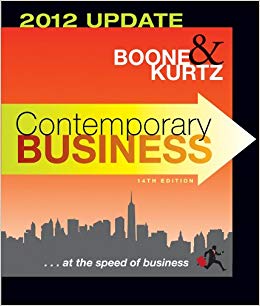1. Do you think marketers can reach teens with specially tailored promotional campaigns for such goods and...
Question:
1. Do you think marketers can reach teens with specially tailored promotional campaigns for such goods and services as video games, smartphone apps, concert tickets, and so on? Why or why not?
2. How can marketers best target teens so as to appeal to them but without making them feel talked down to? Suggest a marketing or promotional theme for one product that you think would appeal to a teen.
Today’s teenagers were born shortly before the turn of the 21st century. They represent billions of dollars in buying power, but the big question for marketers is how to reach them.
Unlike their parents, today’s teens have grown up in this electronic age and take it for granted. Like those of earlier generations, today’s teens like to communicate with each other. Unlike their predecessors, they now can do so almost constantly. One study estimates that teenagers spend more than seven hours a day using media of various kinds, mostly electronic. How do they log this astonishing amount of time? By sacrificing sleep and multitasking. Some older teens can perform seven activities at once. Parents often find their teens listening to music, watching TV program, doing homework, playing a videogame, and text messaging.
What media do teenagers neglect or ignore? They hardly ever read newspapers. Jeffrey Cole, the director of the Center for the Digital Future at the University of Southern California, predicts that printed newspapers will eventually become extinct as social media steadily increase in power. Teens want news, he explains, but only about the narrowly focused community of their peers.
Teenagers don’t contact their peers through e-mail. One survey indicates that although 73 percent of teens visit socialnetworking sites, only about 8 percent use Twitter. They do like smart phones, especially those with apps for constant status updates, but don’t make many phone calls. Instead, they text message sometimes sending up to ten messages an hour.
Marketers will need to learn how to reach teenagers by recognizing that teens like to be invited to get involved, rather than being told. This means asking for their input, listening to them with genuine respect, adopting their suggestions, and continuing to ask for feedback. Morgan Stewart of ExactTarget conducted a survey asking teens which brand they thought did the best job of communicating with them. To his surprise, Amazon got more write-in votes than any other brand, including Facebook. He says of Amazon, “Teens can read reviews, they can submit their own, and they can get recommendations based on what they like.” Stewart believes that “managing your Amazon presence is more important than building out a Facebook strategy.” Of course, even Amazon is only one component of an integrated marketing plan. Teenagers are highly suspicious of anything that seems even remotely like advertising. When shopping, they depend heavily on the opinions of their peers. They also enjoy fun sites such as Sporcle.com, FunnyOrDie.com, and FailBlog.org. YouTube is another important tool for viral marketing, as well as being free.
Jeffrey Cole thinks that as today’s teens move into adulthood, the allure of knowing everything about their friends will fade. What will endure will be something that every generation wants: they will still want to have “total control over their media” as a way of having “real control over their lives.”
Step by Step Answer:

Contemporary business 2012 update
ISBN: 978-1118010303
14th edition
Authors: Louis E. Boone, David L. Kurtz





